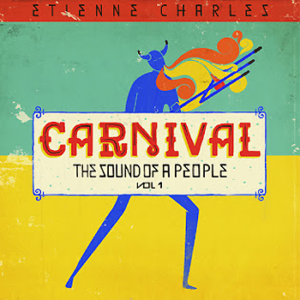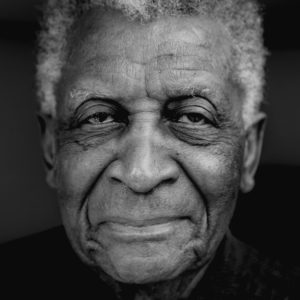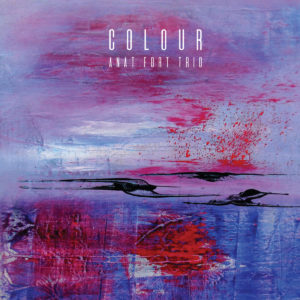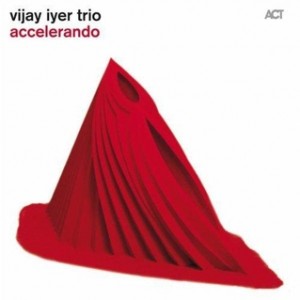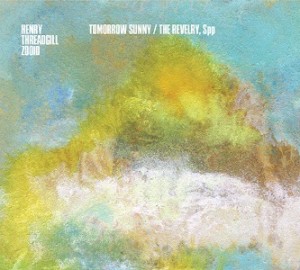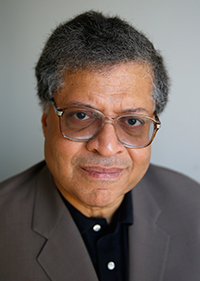I’m not going to say this past year in jazz was stranger than any other. But my list is sure a surprise, at least to me.
I mean…just look at the top five…not just one, but two organ albums? Yes…and not only that, they were both different approaches to jazz organ, having little in common except some righteous tenor sax interaction and all-out commitment from their respective leaders. More on them later.
It makes me remember something told to me back in the 1980s by a very wise man named Jerry Gordon, founder and manager of Philadelphia’s hallowed and still much lamented Third Street Jazz: “There’s no middle ground on organs. People either love them or they don’t.” Jerry would know since Philadelphia has a legitimate claim to being “the jazz organ capital of the world” and indeed, one of the organists on this list has deep Philly roots, deeper even than those of Sun Ra, another organ player who called Philadelphia home and whose massive, unparalleled body of work Jerry would later help curate for Evidence Records.
If anybody occupied Jerry’s nonexistent middle, I was sure it was me, even if I could never avoid such music because as far as my dad was concerned, organ jazz was Dah Joint. This was especially true in the 1960s when he was looking for something to make the rec room jump at odd hours of the night. Jimmy Smith, Jack McDuff, Groove Holmes, Charles Earland, Shirley Scott…those were all his peeps, his boon pals and drinking buddies. Not that I didn’t jump up and down to Jimmy Smith by my own self in those years, but I had so many more outlets for musical comfort and joy. So “love,” as Jerry characterized it, had little to do with it.
Still, as much as Dad would find the basic trappings cozy and familiar, I can’t say for sure whether he’d be able to hang long with these two organ albums. They swing hard, but they also aim high. As much as he liked to jump, Dad likely wouldn’t want to go as high as these two albums. As I say, more on them later.
I suppose that having jazz organ front center aligned somehow with a need I had from jazz and from culture in general to go hard and aim directly at the heart of things. The music that grabbed me the most this past year didn’t dwell on stuff too much, but showed commitment, energy and drive. In plain terms, these albums all followed the ancient bandleader’s imperative to “Hit It!” And that was enough for me.
There was too much else to think about this past year – and also not a whole lot of thinking to go with it. So, if passion was there to be had, my sense of things was that it had better be engaged, tough and above all smart to know where it was going and how it wanted things said and done.
So, let’s hit this!
1.) Etienne Charles, Carnival: The Sound of a People, Vol. 1 (Culture Shock) – I like gumbo. No, I don’t. I love gumbo. I especially love it when its ingredients are scraped, plucked, dug up, mashed, dashed and liberally strewn into the pot with seeming abandon, but also – and always – with instincts homed in on what combinations will at once surprise, awaken and enchant the senses. Charles, a trumpet tyro from Trinidad, has made it his business to collect musical seasonings and spices from all over the Caribbean to create mind-body release music redolent of their cultural origins while intent on illuminating the region’s complex history. His previous work, including 2013’s Creole Soul and 2017’s San Jose Suite, gave off rushes and thrills while disclosing the calculation and intelligence behind them. On Charles’ full-bore inquiry into the festival music of his native land, the erudition isn’t as conspicuous, but the eclecticism is. And the rush invigorates from the jump as an on-site recording of Trinidadian street musicians laying down a rollicking, swiveling beat is amped up by some slash-and-burn post-bop inventions of Charles, also saxophonist Brian Hogans pianist James Francies, guitarist Alex Wintz, percussionist D’Achee and drummer Obed Calvaire and others. David Sanchez adds his agile tenor sax to the simmering pot on other tracks and the leader himself kicks in some percussive support, even a cowbell, to the proceedings. This is the enrapturing and beautiful album one long suspected Charles is capable of delivering and maybe the best part of the whole deal is that this is only “Vol. 1.” Here’s my bowl. More, please.
2.) James Carter Organ Trio, Live from Newport Jazz (Blue Note) – It’s been almost twenty years since Carter, a fire-breathing, bottom-voiced avatar of croon-and-holler saxophone, last took a deep dive into the repertoire of gypsy guitar legend Django Reinhardt. And it’s been almost ten years since he’s released an album of any kind. As if to remind us of what we’ve been missing, Carter audaciously re-engages with Reinhardt’s music and brings along his power backup of organist Gerald Gibbs and drummer Alex White. Thus, two raucous traditions – the red-hot “jazz manouche” of 1930s-1940s Parisian bars and the smoky-blue hardbop of 1950s-1960s uptown nightclubs – were in each other’s arms at Carter’s 2018 Newport Jazz Festival appearance and the clinch proved intoxicating, even transformative. Unlike 2000’s Chasin’ the Gypsy, Carter’s not here to pay homage, but to revitalize such Reinhardt chestnuts as “Le Manoir De Mes Reves,” “Anouman” and “Melodie Au Crepuscule” with soulful strutting and hard-rock shouting. The trio opens “Crepuscule” with a grinding vamp borrowed from Bill Withers’ “Use Me,” drawing the crowd to their side and keeping it in their pocket with Gibbs’ spirited riffing and Carter’s bait-and-switch inventions. While Carter can still blow the doors off any nearby building with his sky-scraping honks, bleats and wails, his deep tone on tenor, alto and soprano sax is supple and lustrous at any tempo or altitude. The smoldering, bewitching variations he makes on “Pour Que Ma Vie Demeure” induce both terror and awe and apply a diamond-hard exclamation point to this triumph for Carter, for Newport and for tradition, wherever it can be salvaged and recombined.
3.) Branford Marsalis Quartet, The Secret Between the Shadow and the Soul (Marsalis Music) – Through the years, nay, decades he and his family have held presumptive dominion over the national jazz discourse, Branford has always been my favorite Marsalis grumpy-pants: testy, feisty, dryly funny and brazenly confrontational with his peers over what jazz music really is and what the public really wants from it. Whether in dispute or agreement with his tirades, I’ve often found them livelier than his music, however solidly crafted and polished in presentation. There’s been no doubt that he and his bandmates – pianist Joey Calderazzo, bassist Eric Revis and drummer Justin Faulkner – have as keen a rapport with each other and with their audience as any working combo. But there hasn’t been a full-blown album that evokes what this rapport can achieve at its best. Until now. Something about this one pulls hard on your coat and ramps up the unit’s commitment and drive. Every member brought their A-game for this session to the point where it’s hard to single out, say, Calderazzo’s sweet, steady-rolling changes on his pieces “Cianna” and “Conversations Among The Ruins,” or Revis’ combustible compositions, “Dance of the Evil Toys” and “Nilaste.” Faulkner, the relative newbie in the group, contains and advances the apparatus with a fiercely applied command of weight and balance belying his youth. And the leader seems more locked in than usual, playing with blazing verve and urgency that enhance his habitual ingenuity. To get the full impact of this group’s high-spirited interaction, you need only listen to its exuberant rendition of Keith Jarrett’s “Windup” that, appropriately, brings this set home. Many moons ago, Marsalis showed his drolly churlish side speaking of Jarrett’s own prickly-pear personality, insisting even then that he had nothing whatsoever against Jarrett’s music, proving that even the hardest-shelled curmudgeons can call upon their generosity when properly inspired.
4.) Abdullah Ibrahim, The Balance (Gearbox) – At 85, South Africa’s greatest living jazz artist finds himself deep in the winter of…not discontent exactly, but of wistfulness that stops just short of melancholy. His piano still dances with as much command of space and time as it ever did. But it now takes its time, forsaking much of the whirling-dervish momentum of Ibrahim’s youth with a more deliberate pace that nonetheless resolutely forsakes caution. The sepulchral mood of “Dreamtime” at first throws you off. But as soon as his seven-piece band Ekaya kicks in full gear on “Jabula”, Ibrahim gets frisky enough with the beat to let you know he’s nowhere near ready to slip into the shadows. He remains as open to riding the rugged and unfamiliar in rhythmic combinations as he ever was and as moving as his performance is of “Song for Sathima,” the paean he wrote for his late wife, vocalist Sathima Bea Benjamin, there’s a grand and open-hearted spirit to the recital that envelops multitudes. Now more than ever, it’s possible to hear — and feel — what got Duke Ellington all het up when he first heard the Artist Formerly Known as Dollar Brand (a name he still uses on the cover of this one, though not as prominently).
5.) Joey DeFrancesco, In the Key of the Universe (Mack Avenue) – When I first saw him as a student at Philadelphia’s Settlement Music School, he was still “Joe DeFrancesco” pounding the hell out of an acoustic piano as if his life depended on it. (The kid playing electric bass behind him was then known as “Chris McBride.” As you’ve heard, his grown-up self is likewise better known under another first name.) Joey went on to follow in his dad’s footsteps on the Hammond B-3 and became keeper of the jazz-organ tradition. This album takes his talents to an unexpected direction and, as much as I’d detected way back in his prodigy period, he seems to be going all-out on this one, using all his considerable resources to probe the mystical and spiritual realms explored by African American jazz artists of the late 1960s and early 1970s. He even brought along Pharaoh Sanders, one of the key figures of that movement, to sit in on a couple of tracks, and damned if the 79-year-old Sanders doesn’t sound here as nimble and propulsive as he did in his “Karma” period. (He even takes the late Leon Thomas’ role in singing the lyrics to “The Creator Has a Master Plan.”) DeFrancesco’s regular saxophonist Troy Roberts plays with similar force and grace and it’s always a treat to hear Billy Hart on drums with Sammy Figueroa ably in support on percussion. But as usual, it’s the leader you can’t wait to hear whether he’s vamping and swinging with deceptive ease, comping with dexterity or surging through the changes with near-demonic energy – though on second thought, “near-demonic” (a compound I think I used when I first wrote about him in his middle school days) is an inappropriate characterization for such a spiritually-based enterprise. Bright moments.
6.) Miguel Zenón, Sonero: The Music of Ismael Rivera (Miel) –– Rivera (1931-1987), also known as “Maelo” or “El Sonero Mayor,” was a genius of salsa singing, a master of antiphonal improvisations spinning choruses within, through and above choruses with such groups as Los Cachimbos and Cortijo y su Combo, table-setters for bomba and plena genres. This makes him an inevitable and fertile subject of inquiry for Zenón, who has dedicated himself to framing and extending the motifs to his native land’s pop music with modern jazz motifs. Once again, Zenon, pianist Luis Perdomo, bassist Hans Glawischnig and drummer Henry Cole find fresh, ingenious and uplifting possibilities from their source material without in any way mitigating its subtle graces. Their effervescent interaction is bracing at any pace, whether in the somber dirge “Las Tumbas” or in the rough-and-tumble “El Negro Bembón” with its rapid-fire quintuplets. As effectively as the rhythm section tamps down each eccentric shift in tempo throughout the album, it’s Zenón’s alto saxophone, by turns fiery and elegiac, that most enraptures in conspicuously, appropriately assuming lead vocals.
7.) Steve Lehman Trio with Craig Taborn, The People I Love (PI) – Put an intense maximalist like alto saxophonist Lehman together with a dedicated minimalist like pianist Taborn and you get…well, is “harmony” the word we’re aiming for here? Probably not since the word assumes they meld with their personalities fully intact. Their give-and-take on “In Calam & Ynnus” suggests at the very least a mutual affinity for ripping stuff apart and slamming the distended shapes back together into odd, but logical coherence. Lehman’s facility for rapid-fire riffing is taken up by Taborn, who is willing to fade their discourse out and let Taborn carry the rest of their colloquy home. Here, even more than on his previous albums, Lehman’s bright, bristly tone proves adaptable to a variety of contexts, whether it’s Autechre (“qPlay”) or Kenny Kirkland (“Chance”). He seems most empowered by a burner like Kurt Rosenwinkel’s “A Shifting Design,” where he, Taborn, bassist Matt Brewer and drummer Damion Reid weave into each other’s embroideries so well that you can’t always tell who’s keeping time. (All of them. likely.) This, to me, is the warmest, sunniest album yet from Lehman and, for that matter, from Taborn. Once again, I’m hoping for seconds.
8.) Nicholas Payton, Relaxin’ with Nick (Smoke Sessions) – As a colleague said to me the other day, Payton may not appreciate being on this list at all, given his contempt for the word “jazz.” He prefers the acronym, “BAM” for “Black American Music” to define what he does. As if to drive the point home, the album includes his composition, “Jazz is a Four-Letter Word,” inspired by the title of Max Roach’s unpublished autobiography and if you want to know what he and Payton mean, the late drummer’s recorded voice is there to explain, both in full and in sampled bits. It’s one of the highlights of this two-disc live trio recording, an unvarnished triumph of multi-tasking as the one-time trumpet prodigy proves himself to be a master of acoustic and electronic keyboards, capable of even comping his horn solos, which are as powerful, vibrant and pulsing with narrative energy as ever. (His singing of “Othello” and “When I Fall In Love” isn’t as masterly, but his downy phrasing suggests he’s on to something nonetheless.) One suspects he’d try being his own rhythm section someday. But at least for this laid-back marathon session, he is fortunate to have bassist Peter Washington and drummer Kenny Washington at his back. They’re not related to each other, but share years of veteran savvy, impeccable timing and implacable focus. As with the Marsalises, Payton isn’t shy about courting controversy and he has in like fashion used whatever rancor he arouses as fuel for his forward progress. However you feel about his pugnacity, he’s at peace with it – and you should be, too.
9.) Wadada Leo Smith, Rosa Parks: Pure Love (TUM) – The peerless and, at 77, apparently tireless Smith previously paid tribute to Rosa Parks and the 1955 Montgomery bus boycott seven years earlier in his epochal opus Ten Freedom Summers. He takes what he characterizes as the boycott’s “381 Days of Fire” and unfurls from its core an oratorio in Parks’ honor with seven songs, three singers (Min Xiao-Fen, Carmina Escobar, Karen Parks), a string quartet, a brass trio (including Smith’s trumpet), two percussionists and some electronic sound mixing. Smith also augments this blend with excerpts from recordings he made about fifty years before with fellow “creative music” insurrectionists Anthony Braxton, Leroy Jenkins and Steve McCall. The music may not be “easy,” but its message is elemental: a plea for simple justice in the face of fear and loathing. Not to put too fine a point on this, but given the imperatives of the present day, such a testament would be worth the investment of those who are closest to you – and especially those who aren’t.
10.) Paolo Fresu, Richard Galliano, Jan Lundgren, Mare Nostrum III (ACT) – One of the treasures of European jazz has put out three gorgeous albums in more than a decade and still aren’t as famous as they should be on these shores for emitting some of the most transfixing sounds on the planet. The great Galliano (as I’ve come to call him, mostly because it sounds cool) remains a formidable paragon on the accordion and related gadgets. But what’s become apparent over time is how he’s made his virtuosity merge so seamlessly with Fresu’s plangent horn and Lundgren’s dulcet keyboard. They collectively merge their distinctive voices so as to now seem to speak as one delicate, riveting entity. Both the familiar (“Windmills of Your Mind,” “Love Theme from ‘The Getaway’”) and the not-so-familiar (Lundgren’s “Ronneby,” Galliano’s “Letter to My Mother,” and Fresu’s “Human Requiem”) are rendered in short takes, densely packed with rich melodic invention and tightly contained passion. Some might dismiss it all as “pretty,” but you can pass by “pretty” with ease. These guys make the kind of terrifyingly beautiful music that stops you in your tracks if you’re not careful.
HONORABLE MENTION : Steve Davis, Correlations (Smoke Sessions), Anat Fort Trio, Colour (Sunnyside), Matthew Shipp Trio, Signature (ESP)
Ed Palermo Big Band, A Lousy Day in Harlem (Sky Cat), Anat Cohen Tentet, Triple Helix (Anzic)Toni Freestone Trio, El Mar de Nubes (Whirlwind)
Fabian Almazan Trio, This Land Abounds with Life (Biophilia)
BEST VOCAL ALBUM
Catherine Russell, Alone Together (Dot Time)
HONORABLE MENTION; Annie Addington, “In a Midnight Wind” (Annie Addington)
BEST LATIN ALBUM: Miguel Zenón, Sonero
HONORABLE MENTION: Guillermo Klein & Los Guachos, Cristal (Sunnyside)
BEST HISTORIC ALBUM
Eric Dolphy, Musical Prophet: The Expanded 1963 New York Studio Sessions (Resonance)
Stan Getz, Getz at the Gate: The Stan Getz Quartet Live at the Village Gate, Nov. 26, 1961 (Verve)
Gerald Cleaver & Violet Hour, Live at F1rehouse 12 (Sunnyside)
